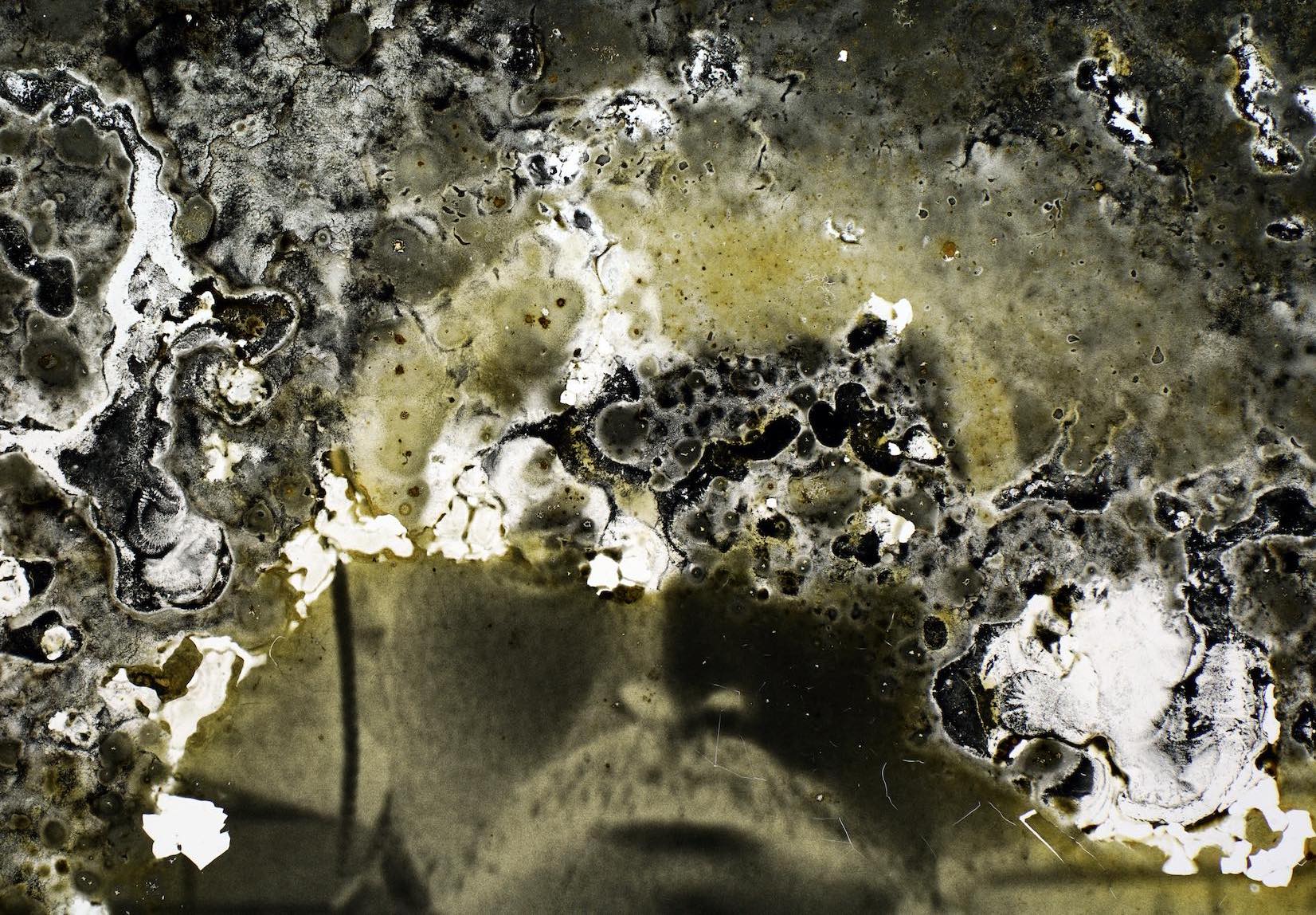
Interview
The Material Life of the Photograph: Joan Fontcuberta
by Sandra Sánchez
At Hydra
Reading time
5 min
Joan Fontcuberta paused the rhythm of the archive in its dimension of document and information in order to think—in front of it, drawing from it—about the material life of the photographs. He interrupted the premises’ daily function as a warehouse with the intention of carrying out an uncovering operation, appealing to complicity. He asked the archivists for those photographs destined for near-destruction by excess of life: fungi. At first, they denied the problem. After a certain conversation (not accessible to us) the damaged ones were placed before Fontcuberta’s eye and lens, with no opportunity to remain in history.
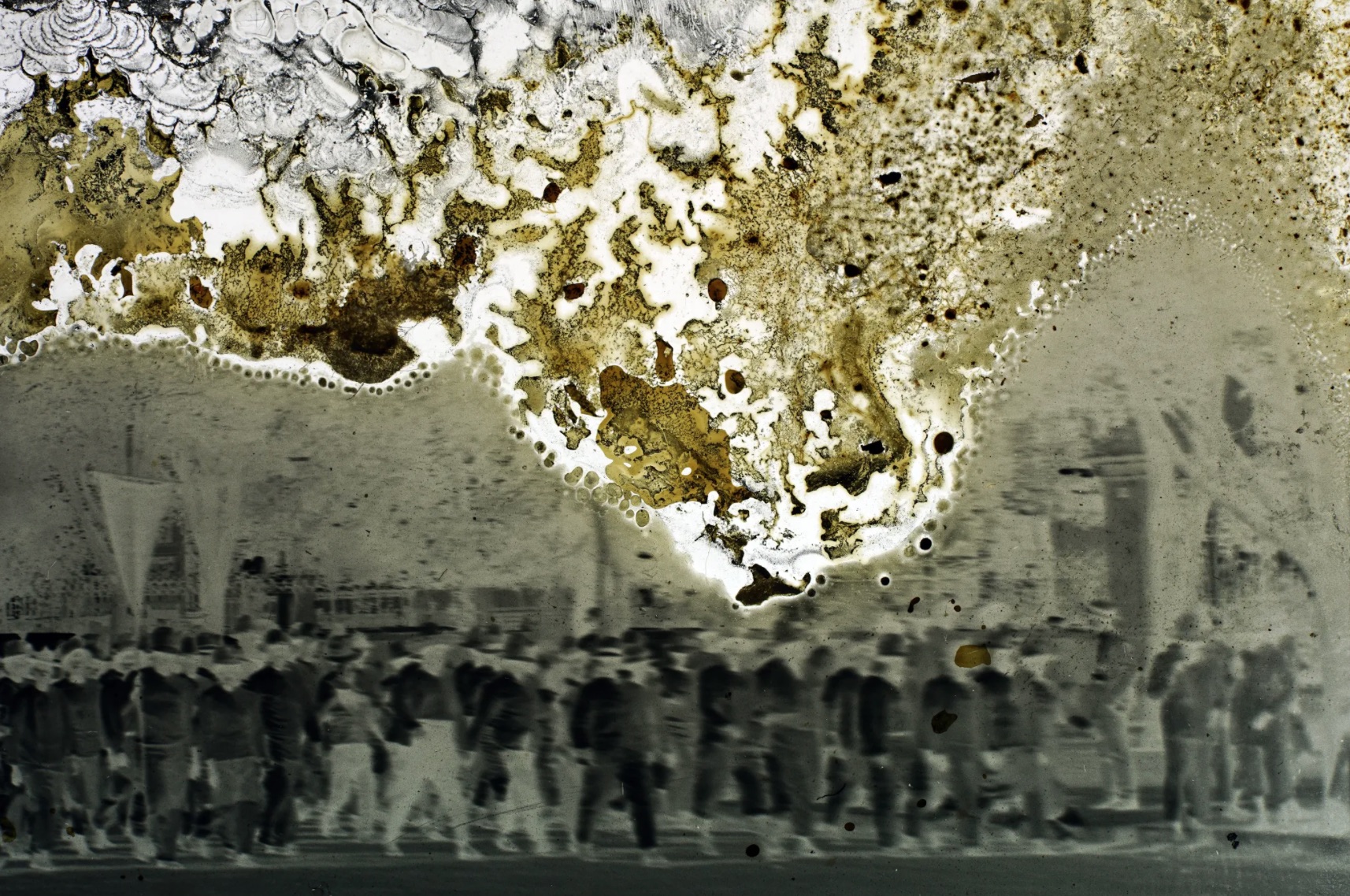
The proposition allows us to reflect on movement. We tend to think of images as a fixed series of shapes, lines, colors, and blotches that we can identify and to which we can assign meaning. What Fontcuberta does is place in the background any content or meaning in order to go straight to the medium itself: in this case, to the physical surface on which a technology is deployed, and that in time has succumbed to agents who found there an ideal environment in which to reside.
In his words, this research is focused on:
“negative plates or photographs on paper where there’s a dialogue between the remains of the image and the irruption of the fungal culture that begins invading the image: the effect of organic irruption with the remains of the original image.”
Fontcuberta visited half a dozen Mexican archives in Pachuca, Mérida, and Mexico City. When talking about the archives, he lets out an adventurous tone. He compares them with Ali Baba’s cave:
“There are treasures if one knows how to recognize them. For a collector or expert, a particular piece can be a treasure.”
In tension with the euphoria that the adventure produces is the pathos derived from the material reality of each of the photographs. For him, something happens in the images on the order of trauma, such as a blow, defeat, or wound that transforms the culture and what is to come.
“I find the trauma of the images when visiting archives and seeing how the images that are flung there begin to deteriorate.”
Deterioration is a trace of movement itself: it points to the threshold between analogous techniques and post-photography, something that tends to de-materialize.
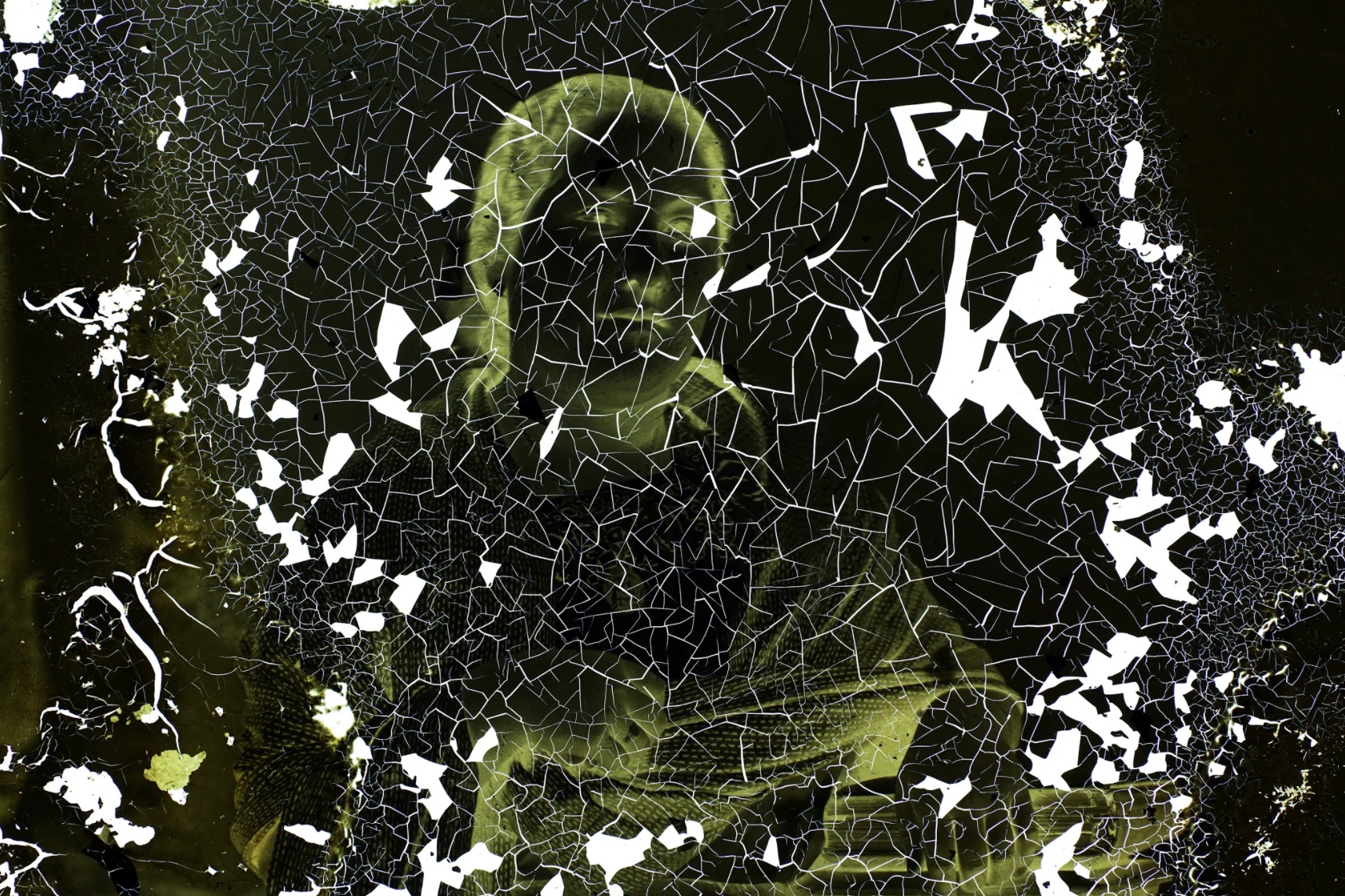
Although the protagonist of this research is the body of the photograph, Fontcuberta’s discourse traverses an animistic dimension that gives subjectivity to the medium in question. I didn’t succeed in finding out if he formulated these sentences as rhetoric or as fact, but this also doesn’t matter very much; what’s fascinating is the way that our gaze rests on the transformation process.
Following his animistic wager, the artist several times brings up to the front not only the body of the photograph but also its memory: fungi and matter burst onto the body of the images, until they lose their memory, becoming amnesiac:
“I’m interested in those photographs in a trance of losing the capacity for which they were created.”
Although loss, change, and transformation are constants in this project, it should be made clear that Fontcuberta does not feel nostalgia for movement, the passage of time, or disused technology:
“There are gains and sacrifices, as well as losses,”
he explains. Rather, his photographs offer the possibility of watching the transit between one form of production and another: at that point we ask whether we are before a living environment or one about to die.
The public life of this exercise takes two paths with the same name: Mictlán is both a show and a book. The exhibition, made up of 20 images, opened on March 6 at Hydra, whose publishing imprint, Inframundo, undertook the task of manufacturing photobooks in collaboration with Ramón Pez, who was charged with the graphic design. In that publication the number of images grows to 80, the selection made from a total of 1,200 captures.
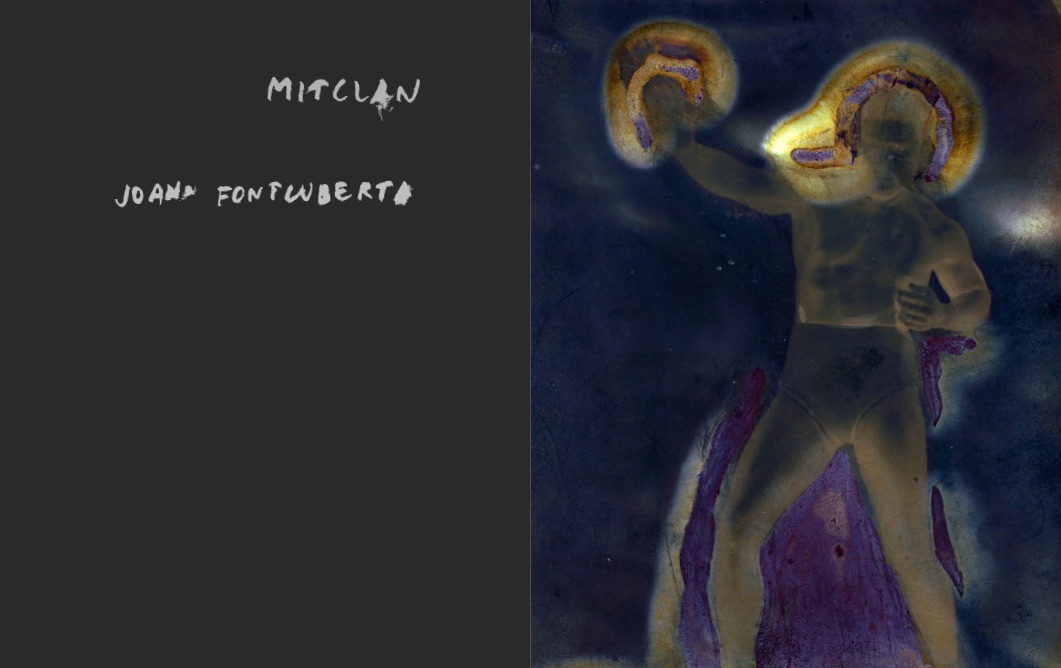
The structure of Mictlán, the Mexica underworld, functions as a guide for the curation and for the book’s design. The author tells us how he got there:
“When we look at the photographic archive from a bird’s-eye view, there’s a sober dimension and a violent dimension, which linked it to certain cosmologies of pre-Columbian Mexico. This is how I arrived at the narrative of the underworld with nine levels, involving a series of trials before reaching Mictlán.”
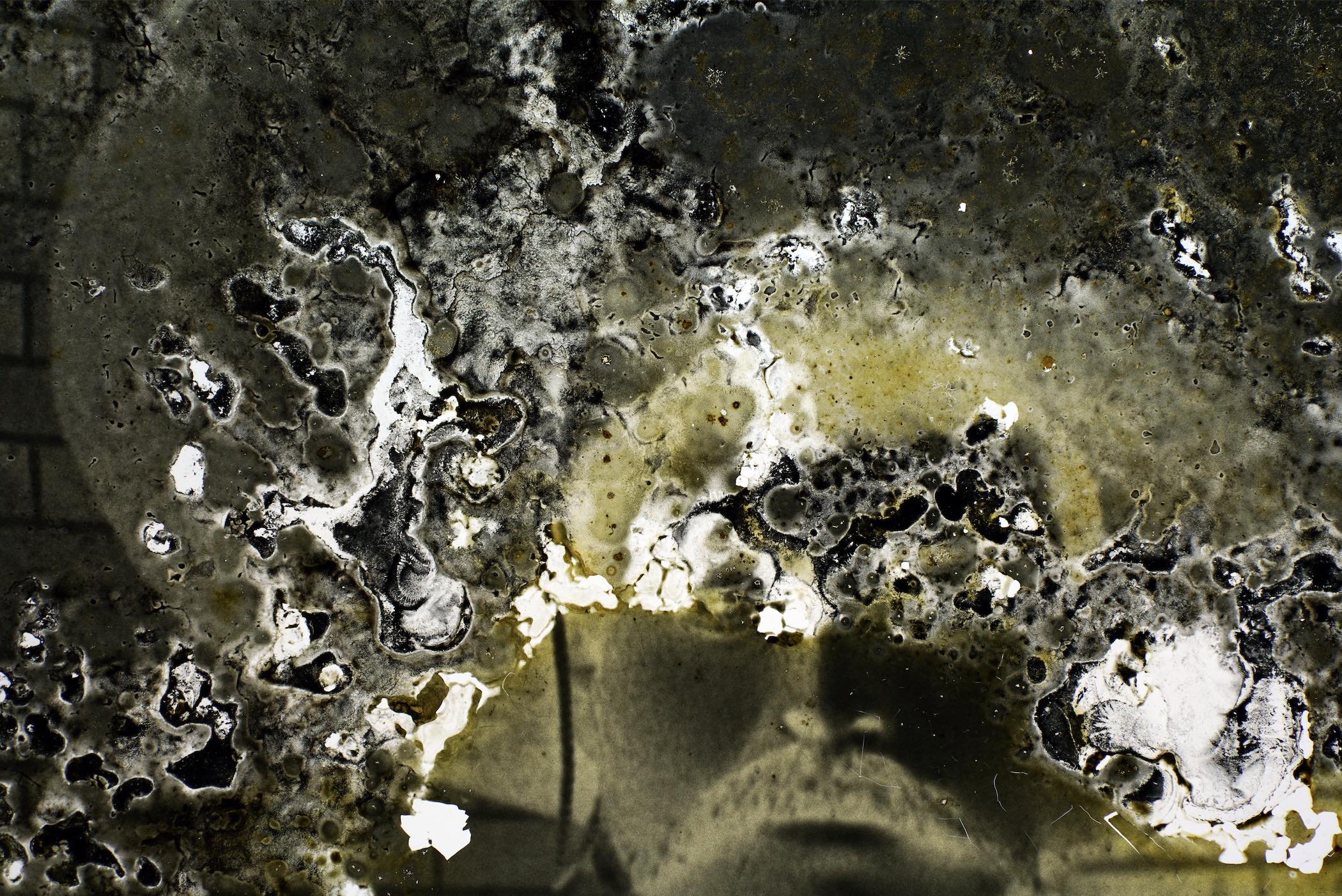
I find the reference to the Mexica underworld a bit forced in relation to the project’s general aim. I’m not sure if I’m convinced by the act of adding a symbolic layer to these images that themselves display the blurring of meaning. I would have preferred hanging around the initial proposition for longer, without any rush, before arriving at this next elaboration. Still, I understand that the new images—those taken by Fontcuberta—in their present relevance, converge with other semantic territories, making evident how photography is always a multiple-choice field: from the framing to the discursivity in which it is placed.
Published on April 23 2020